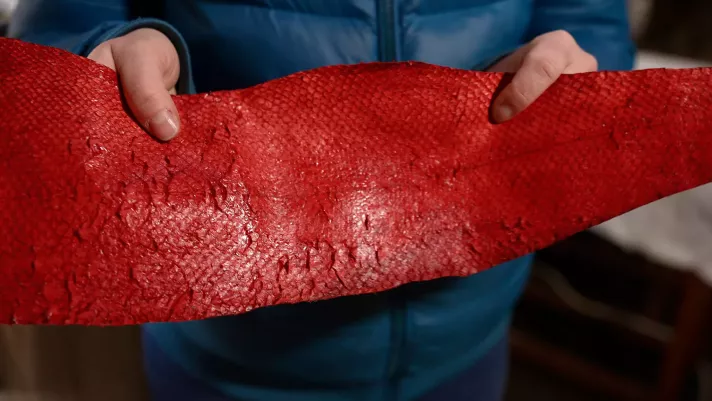You’re at home, your fish slowly roasting in the oven for dinner, easily cooked as it had already been prepared by your favourite fishmonger or supermarket. But what happened to its skin? Had it just been thrown away? Wouldn’t it make more sense to use all parts of a fish?
That was the issue of the people behind FEMER aimed to tackle. The project aimed to develop an innovative tanning technique that would convert fish skin into a high-grade leather for use in the fashion industry.
Of course, no fish is killed for its skin. The skins destined for destruction are recovered from their partners in the food industry, before they could end up as waste in their garbage cans.
To ensure an eco-responsible tanning process, the tannins used are only extracts from crushed invasive plants, such as mimosa.
Through cooperation with local fishers and designers, and inspired by traditional techniques from other fishing communities in Europe, a young French entrepreneur has developed an innovative fish skin tanning process and now sells her “marine leather” to fashion designers all around the country.
The project highlights the potential of breaking down barriers between local entrepreneurs and more “traditional sectors”, which harbour a wealth of local resources and knowledge that can be adapted to create innovative products and ideas.
It demonstrates how the circular economy can work in a coastal community: building on local fisheries resources, having a positive impact on the environment, and promoting sustainable fashion.
FEMER is an EU-funded project – and inspired another project, Cuir Casteigt, funded by the European Maritime and Fisheries Fund (EMFF) to launch itself!
“The process is quite long. It takes about two weeks to go from the raw skin to dyed and finished leather. The skins are soaked several times - going in tanning and colouring baths, and then they undergo a mechanical treatment - they are flattened and stretched, attaining better flexibility and a certain finesse...During the process, we only use crushed plants, no other chemicals, so it’s quite environmentally friendly."
“It's the same as classic leather. The only difference is that there’s a scaled pattern - just like ostrich leather, crocodile or snake leather, which also has a pattern, so it’s in the category of so-called exotic leathers.”

